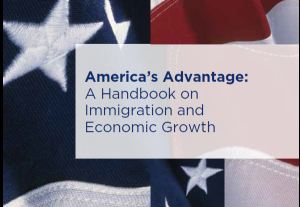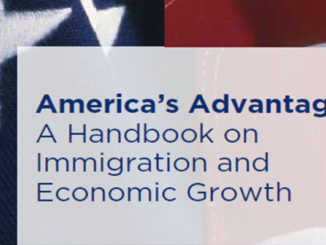
by Machir Stull
As the population of Europe and parts of Asia grow older, and the growth rates in those parts of the world decline markedly, the United States is looking at a distinct advantage over the next several decades. By 2050, the median age of the U.S. population will be only 41 and our population will be expanding, not declining.
Steady population increases will help the nation grow its economy through larger markets, more creativity and an expansive workforce. As The Economist observed recently, immigrants, especially Latino immigrants, will be a major reason for this growth.
Of course, immigration is often a contentious subject. That’s why the Bush Institute is proud to partner with the U.S. Hispanic Chamber of Commerce in releasing today an update Immigration Handbook at the Chamber’s annual Legislative Summit in Washington, D.C.
Our hope is that the data in this book will lead to an informed conversation about immigration. The subject does not lend itself to simple answers and is highly complex. But all too often, only the contentious parts of the issue make headlines. Border security, unauthorized immigration and job displacement are important matters, but they only tell part of the story.
Authored by Matthew Denhart, the handbook examines the many positive ways in which immigrants contribute to the economic landscape. Here are three key findings:
*Immigrants expand the workforce;
*Immigrants start new businesses; and
*Immigrants are a primary source for new ideas, patents and innovation.
Immigration trends are especially playing out in big states like Texas and California. According to the U.S. Census Bureau, the foreign-born share of Texas’ population rose from 9% in 1990, to 13.9% in 2000, to 16.5% in 2013. More than four million in all, as of 2013. International migration also is a key reason that the population of the Dallas-Fort Worth region is one of the nation’s fastest-growing metro areas.
Texas has seen the economic benefits of these trends firsthand. Its unemployment rate sits at a healthy 5.6 percent, and, in 2013, its gross domestic product outpaced the country at 3.7 percent to 1.8 percent.
On a larger scale, the United States has remained one of the world’s most powerful economies because it has attracted some of the best and brightest from all corners of the globe. America is a land of immigrants, and, as the Immigration Handbook explains, our economy has reaped the benefits.
America’s Advantage by Latinos Ready To Vote
Machir Stull manages the economic growth initiative at the Bush Institute.



